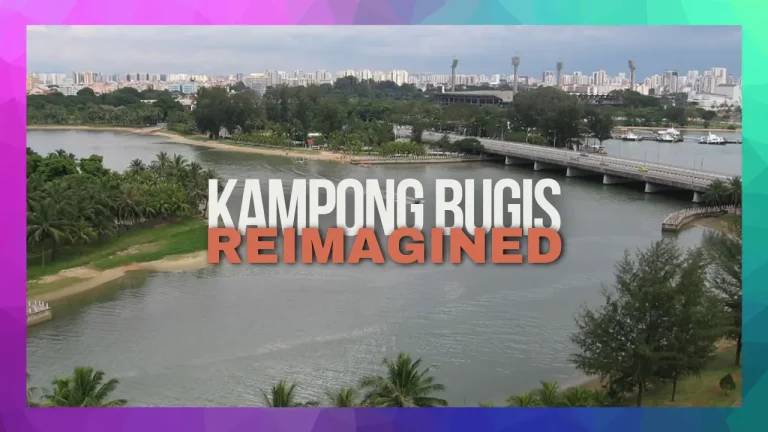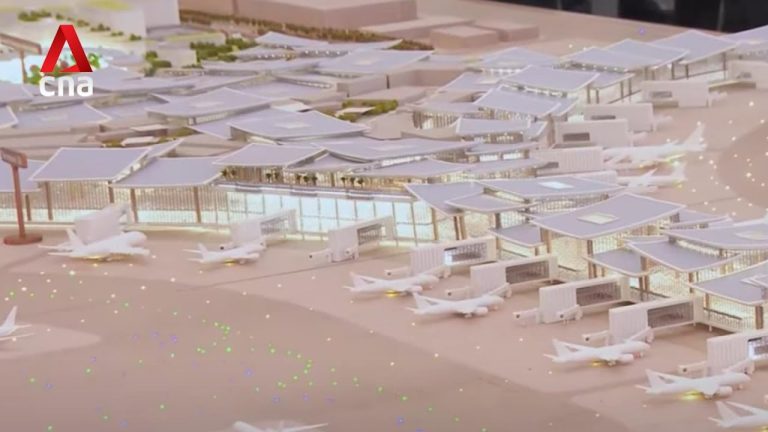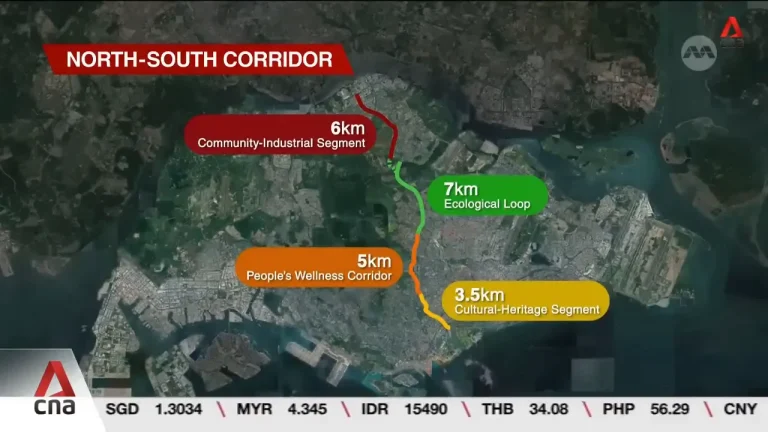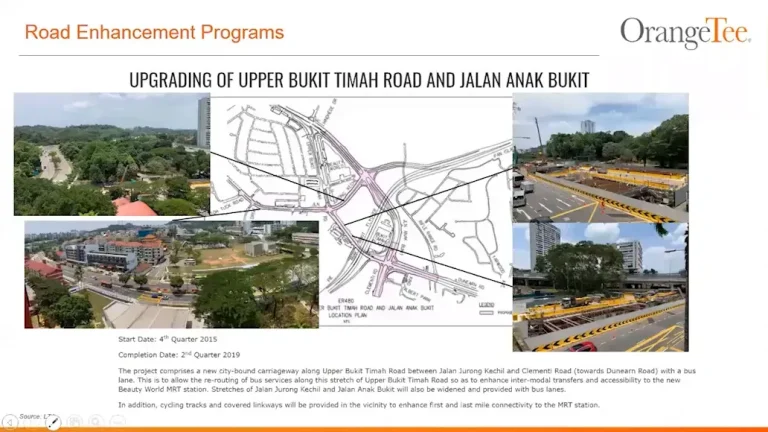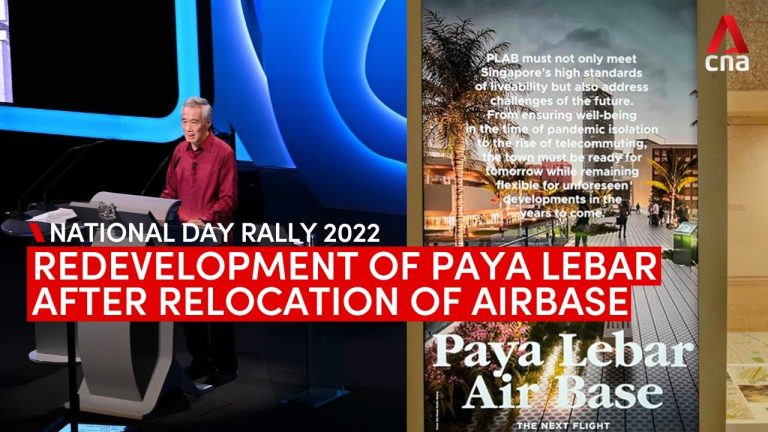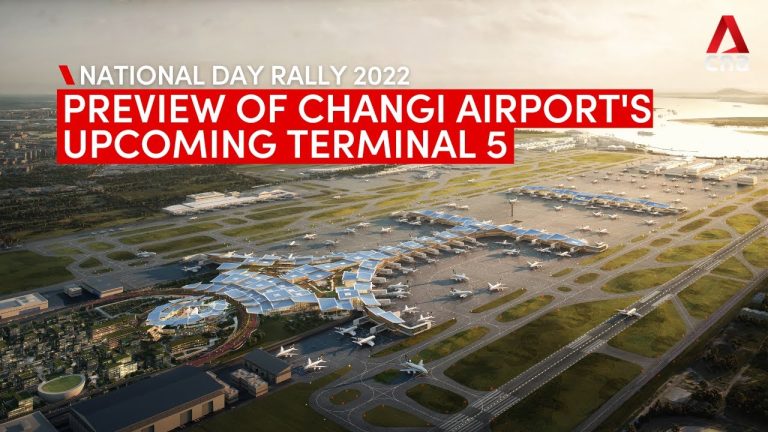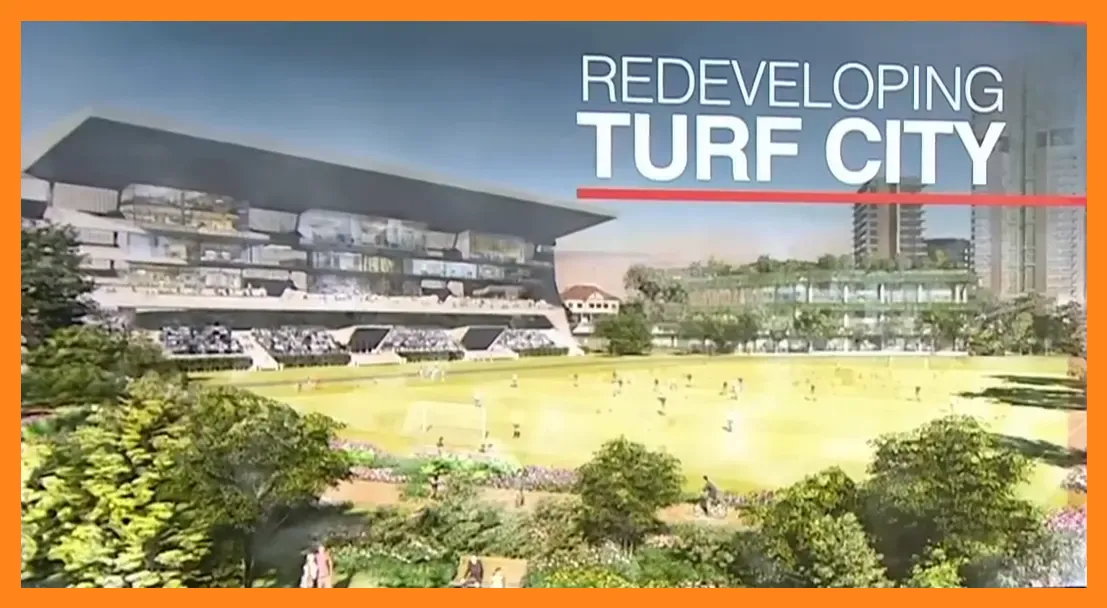
Up to 20,000 New Homes to be Built at Bukit Timah Turf City: A Vision for the Future
Singapore’s Bukit Timah Turf City is set for a monumental transformation over the next two to three decades. Plans have been unveiled to develop up to 20,000 new homes on this historic site, marking a significant milestone in urban redevelopment.
This ambitious project, announced by National Development Minister Desmond Lee, aims to address the evolving housing aspirations of Singaporeans by bringing them closer to workplaces in the city, while preserving the rich heritage and natural environment of the area.
In this comprehensive article, we explore the multi-faceted development plans for Bukit Timah Turf City, including the integration of public and private housing, conservation of heritage buildings, environmental sustainability efforts, and the challenges and opportunities presented by this brownfield redevelopment.
Drawing insights from urban planning experts and heritage specialists, we delve into how this development balances growth with preservation, community needs, and future-proofing Singapore’s urban landscape.

Table of Contents
- The Vision: Building a Future-Ready Estate at Bukit Timah Turf City
- Four Distinct Neighborhoods: Blending Heritage, Lifestyle, and Nature
- Heritage Conservation: Preserving Bukit Timah Turf City’s Storied Past
- Environmental Conservation: Protecting Nature Amid Development
- Urban Planning and Infrastructure: Building a People-Centric, Car-Light Estate
- Public Engagement and Next Steps
- Frequently Asked Questions (FAQ)
- Conclusion
The Vision: Building a Future-Ready Estate at Bukit Timah Turf City
The development of Bukit Timah Turf City is part of Singapore’s strategic approach to land use, aiming to optimize limited space while meeting the diverse needs of its population.
The plan includes a mix of private homes and public housing, with the latter making its debut in Bukit Timah after nearly 40 years.
This is a significant step towards “democratizing the city” by providing more equitable housing opportunities in a prime location traditionally dominated by private residences.
Minister Desmond Lee emphasized that the development is designed to enhance the living environment for both future residents and those currently living nearby.
“In planning this future estate, we want to enhance the living environment, not just for the future residents who will move into the area over time, but also for existing residents who are living around the area,” he explained.
The government has actively engaged with local communities to incorporate feedback, particularly regarding connectivity and amenities such as retail outlets and community spaces.
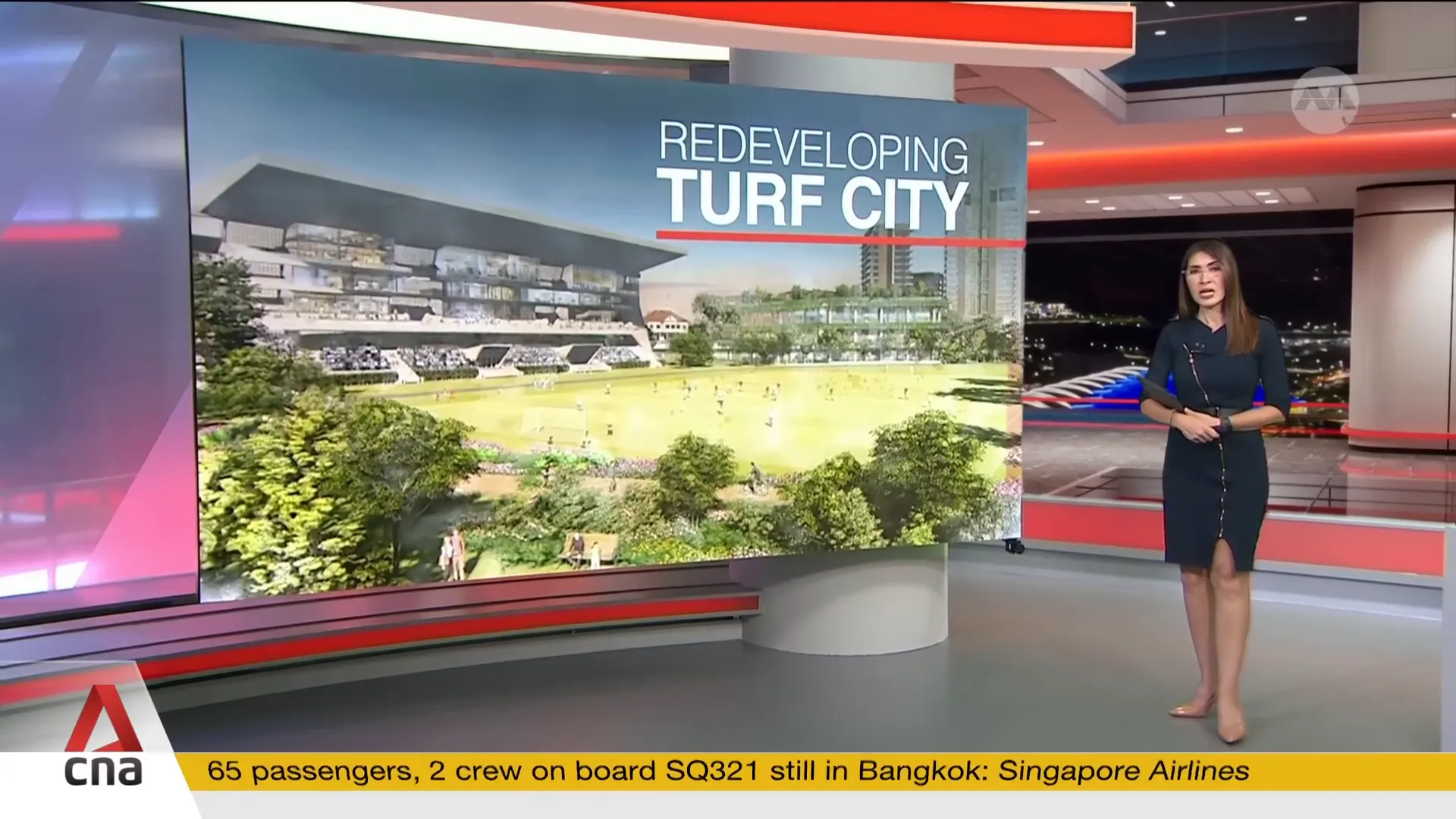
Meeting Aspirations for Proximity and Connectivity
One of the primary motivations behind the Bukit Timah Turf City development is to meet Singaporeans’ aspiration to live closer to their workplaces.
The site’s proximity to the city center and upcoming transport infrastructure makes it an ideal location for a new residential estate.
This aligns with the broader urban planning goal of reducing commute times and promoting sustainable living through enhanced public transport options and walkable neighborhoods.
Residents in the surrounding areas have expressed enthusiasm for improved connectivity and additional amenities, which the new estate will deliver. Integrating these features is crucial for fostering a vibrant, community-centric environment that supports social bonding and a high quality of life.
Four Distinct Neighborhoods: Blending Heritage, Lifestyle, and Nature
The Bukit Timah Turf City estate will be organized into four unique neighborhoods, each reflecting the site’s rich heritage and natural landscape while providing modern living spaces and recreational facilities.
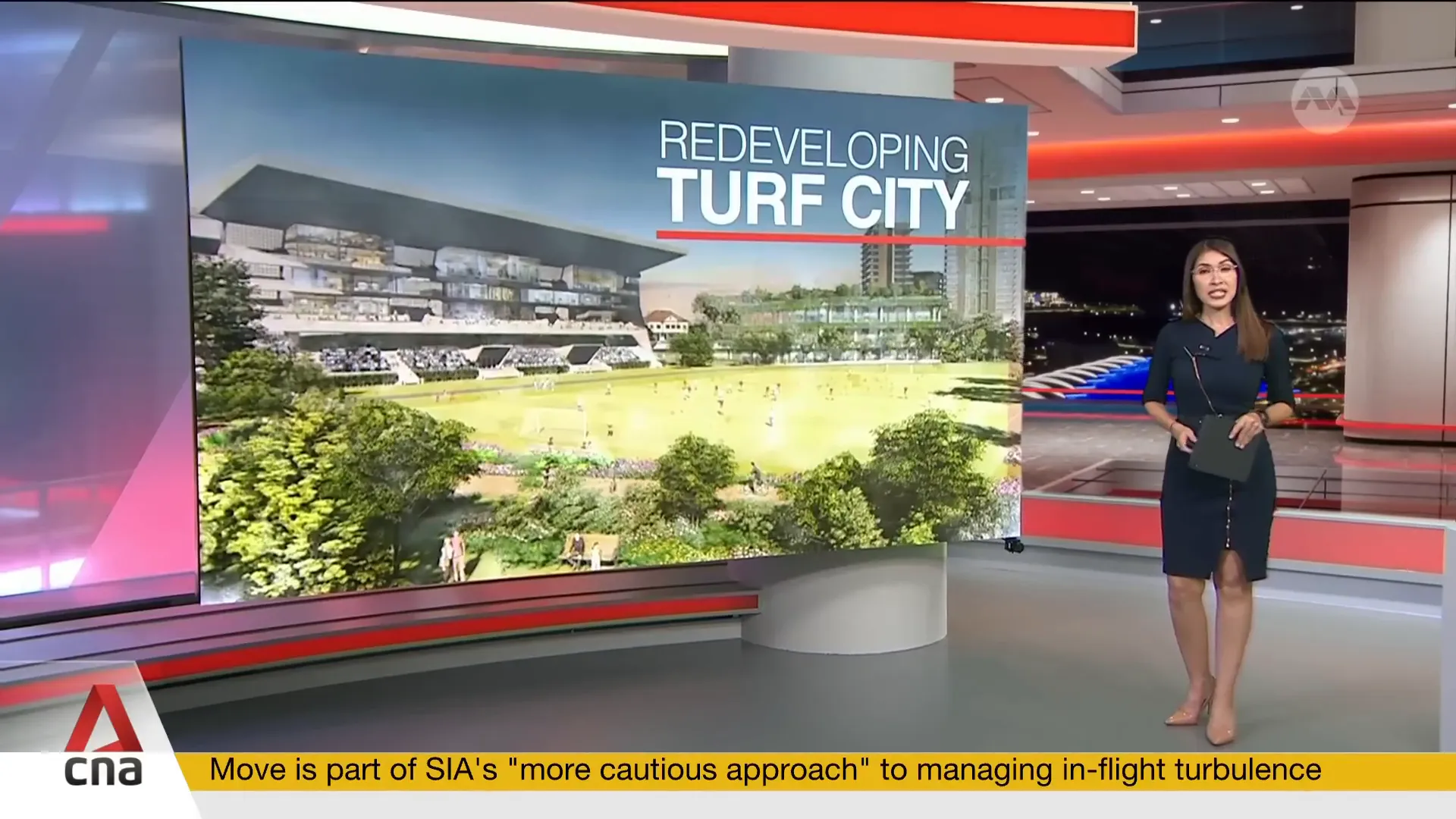
1. Race Course Neighborhood
The Race Course neighborhood will be the centerpiece of the development, anchored by the iconic North Grandstand and a new oval.
This area pays homage to the site’s history as Singapore’s second race course, which operated from 1933 to 1999. The new oval will be designed to accommodate recreational and sports activities, creating a vibrant community hub.
Strategically located next to the upcoming Cross Island Line MRT station, this neighborhood will offer excellent transport connectivity, supporting the goal of a car-light environment.
The integration of heritage structures with new public spaces will provide residents with a unique blend of history and modern lifestyle.
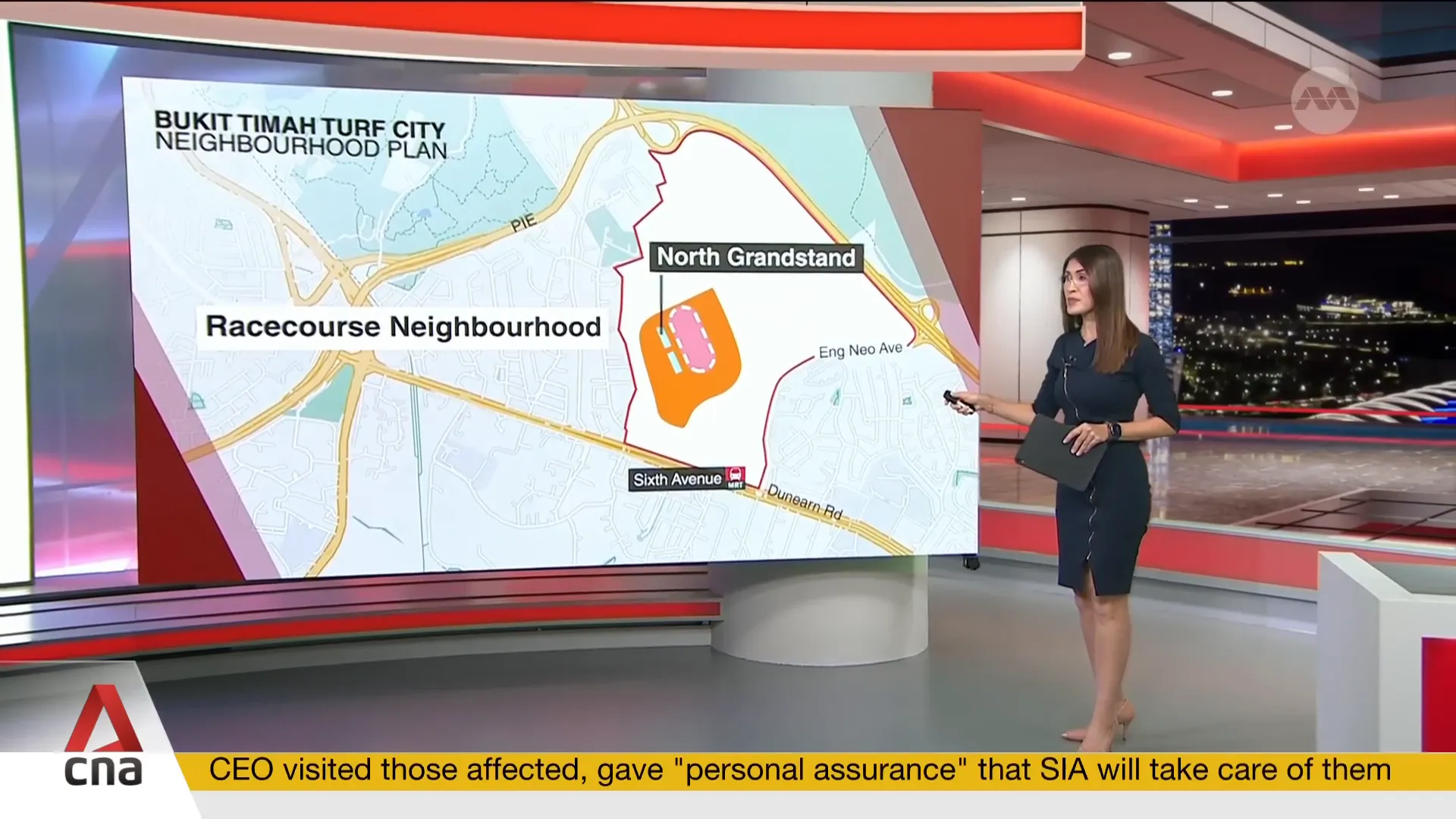
2. The Stables Commune
Located along Dunearn Road, near the Sixth Avenue MRT station, the Stables Commune neighborhood draws inspiration from its historical roots. As the name suggests, this area will be built on the site of former stables and workers’ quarters that once supported the race course operations.
Future plans include small-scale lifestyle offerings that foster a close-knit community atmosphere. This neighborhood is envisioned as a vibrant enclave where residents can enjoy boutique retail, dining, and leisure options, all while surrounded by preserved heritage elements.
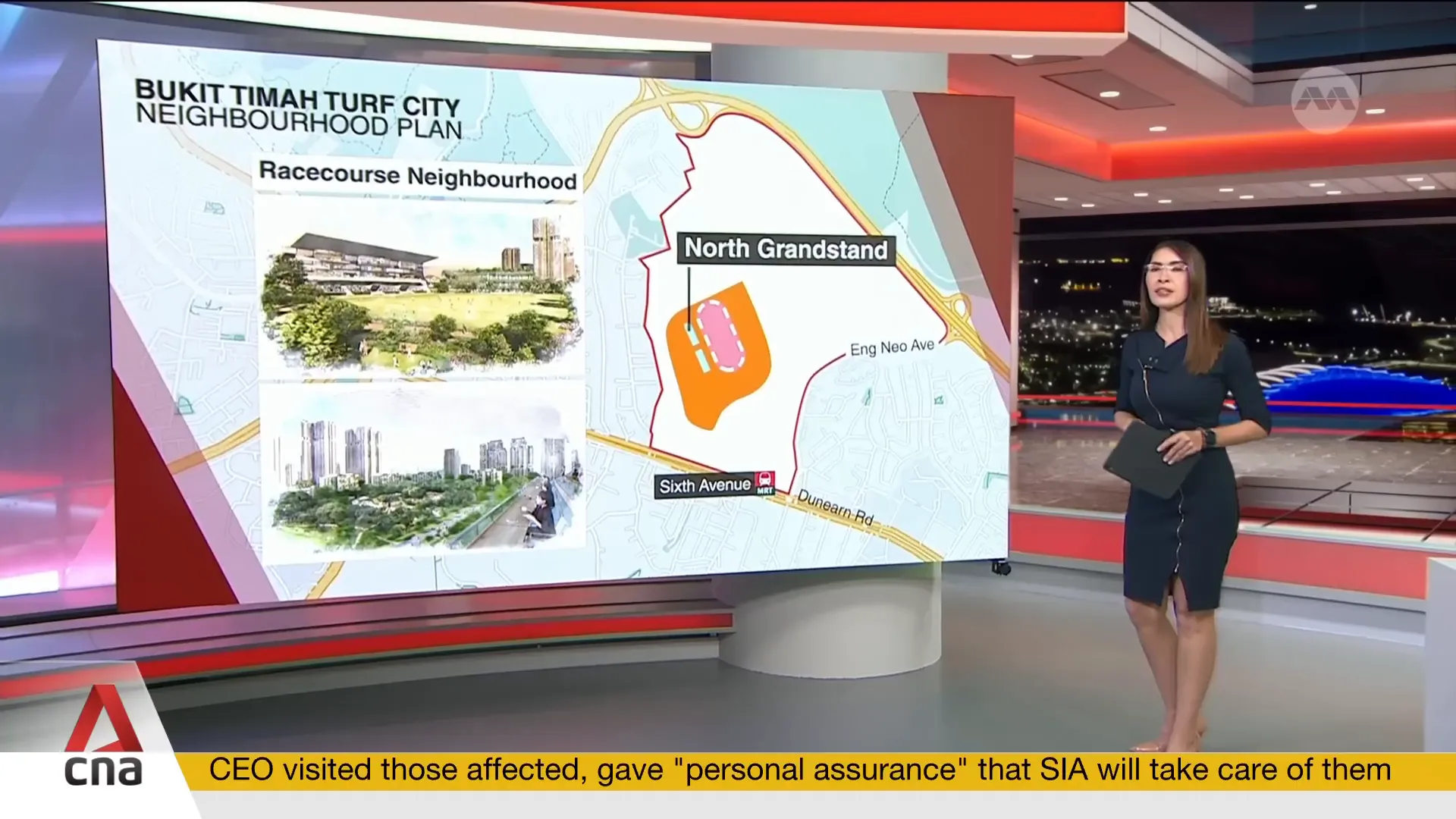
3. Saddle Club Knowles
With a rustic vibe, the Saddle Club Knowles neighborhood will be nestled on rolling terrain adjacent to the Einya Forest. This area is designed as a lifestyle and gathering space suitable for family-friendly activities and community events.
Significantly, heritage buildings in this neighborhood will be carefully incorporated into the development plans, preserving the character and stories of the past while providing functional spaces for the future.
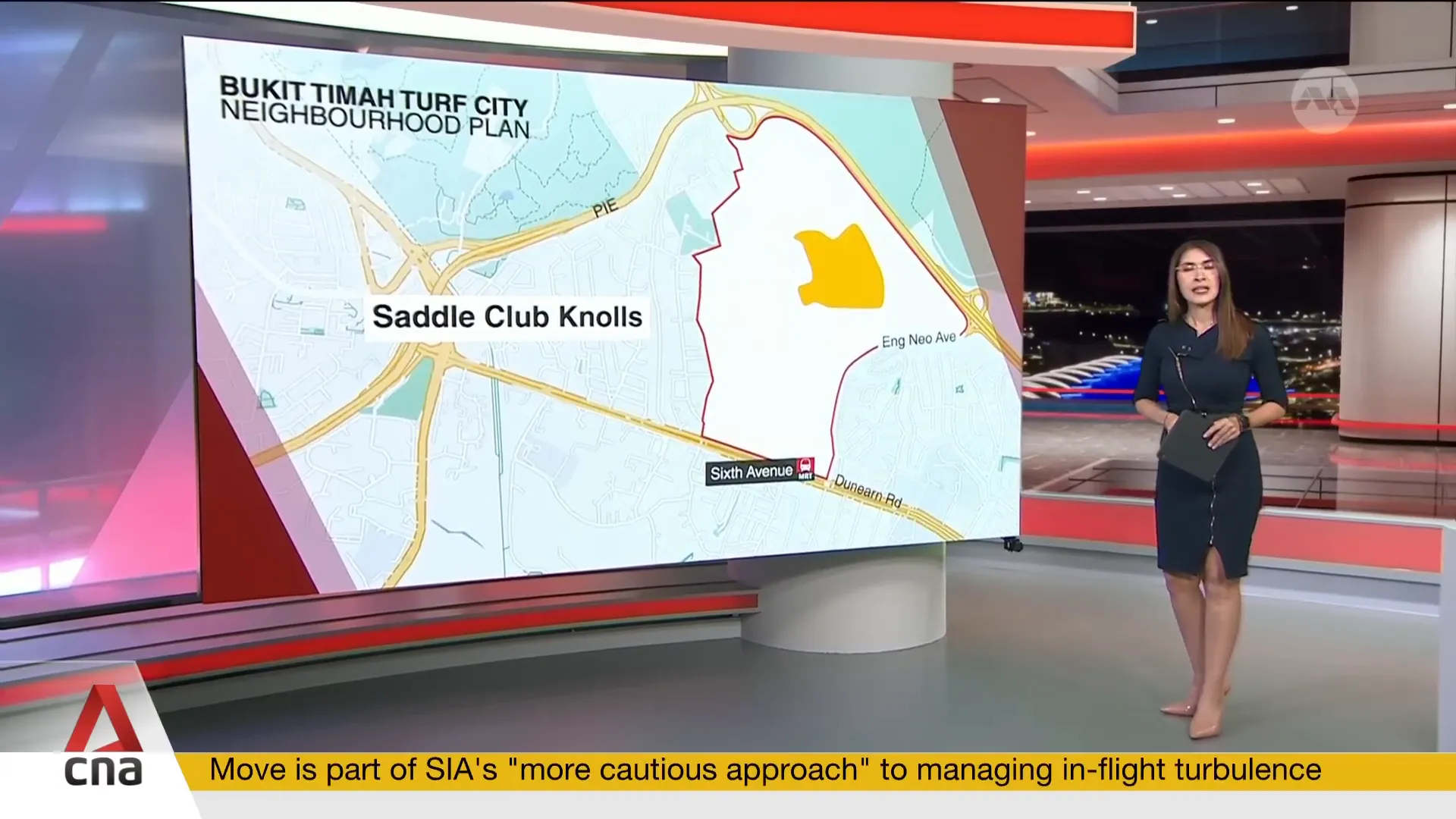
4. Foothills of Bukittinggi
The fourth neighborhood will occupy land formerly used as a golf course, offering residents picturesque views of the Central Catchment Nature Reserve and the flora and fauna of Bukittinggi.
This area emphasizes a close connection to nature, with a focus on environmental conservation and green living.
The design will seek to maintain the natural landscape, integrating it with residential spaces to create a serene and sustainable living environment.
Heritage Conservation: Preserving Bukit Timah Turf City’s Storied Past
The Bukit Timah Turf City site spans approximately 176 hectares and holds significant historical value as Singapore’s second race course.
A key feature of the redevelopment is the potential retention and integration of 27 heritage buildings and structures, following recommendations from heritage groups and consultations with local communities.
Among these are the North Grandstand, stables that once housed racehorses, bungalows where former staff lived, and the Bukit Timah Saddle Club clubhouse.
These structures serve as physical markers of memories, emotions, and community connections that contribute to Singapore’s broader historical narrative, including sporting, social, and economic aspects.
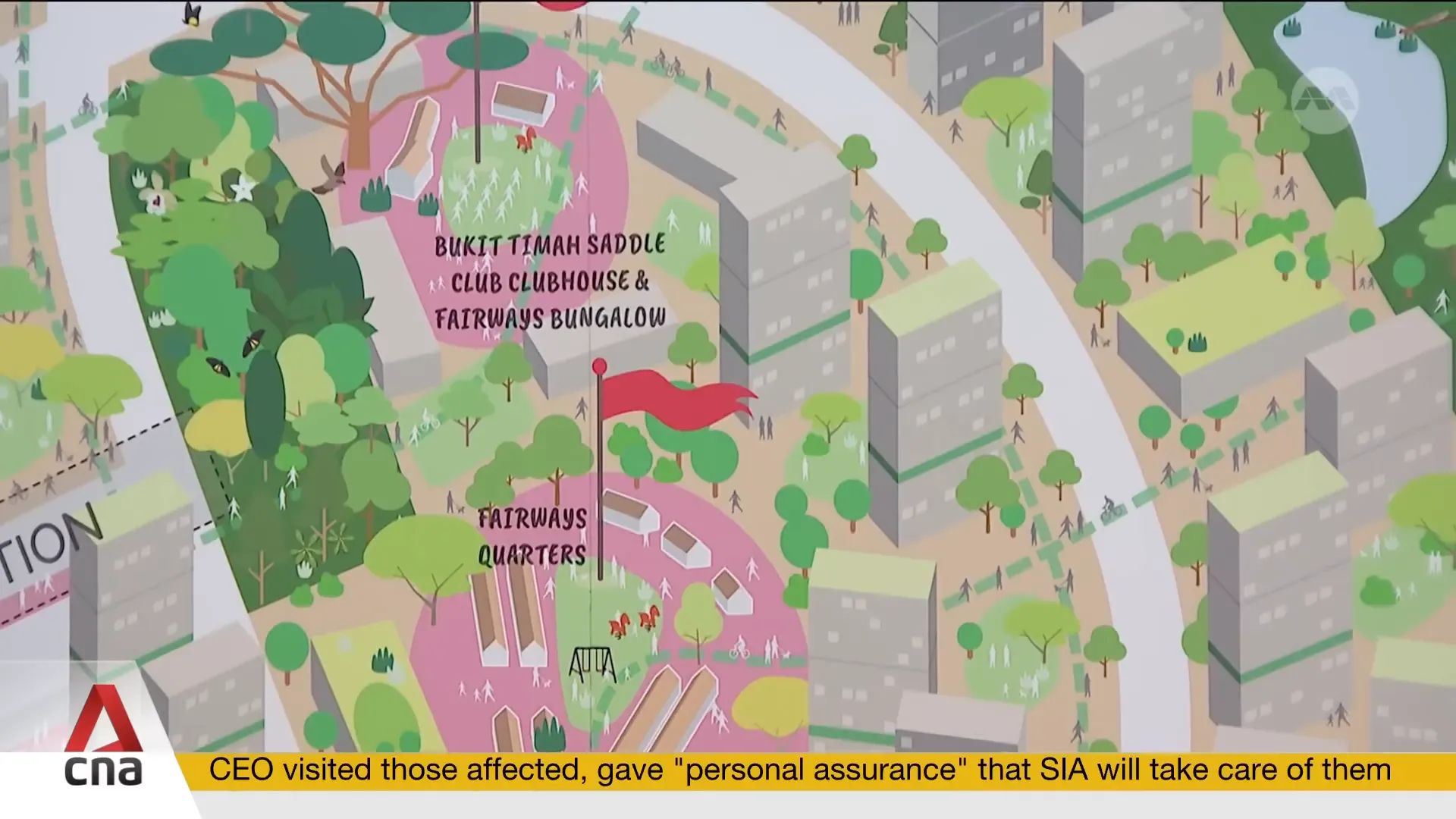
The Value of Conserving Heritage Sites
Dr. Ho Chi Tim, a senior lecturer at the Singapore University of Social Sciences, highlights the importance of conserving these sites.
“These sites are definitely worth conserving, especially if they are places where people and communities live, work, play, and interact with each other,” he said. The personal stories and memories tied to these places enrich Singapore’s history and cultural identity.
Conservation efforts will also include the creation of storyboards and heritage trails to document and share the site’s rich history with future generations, tourists, and locals alike.
Challenges and Opportunities in Heritage Conservation
From an urban planning perspective, Associate Professor Edward Tee from Singapore Management University notes that balancing respectful conservation with functional reuse is a significant challenge.
The buildings, some dating back to 1933, require careful treatment to avoid becoming “white elephants” — preserved but unused structures.
Yet, these heritage buildings also present unique opportunities. Their presence enhances the site’s attractiveness and cultural value, especially when integrated with surrounding green spaces that will make up about one-third of the estate.
Being located near prestigious schools and amenities, the area is expected to see strong demand from residents who appreciate this blend of history and modernity.
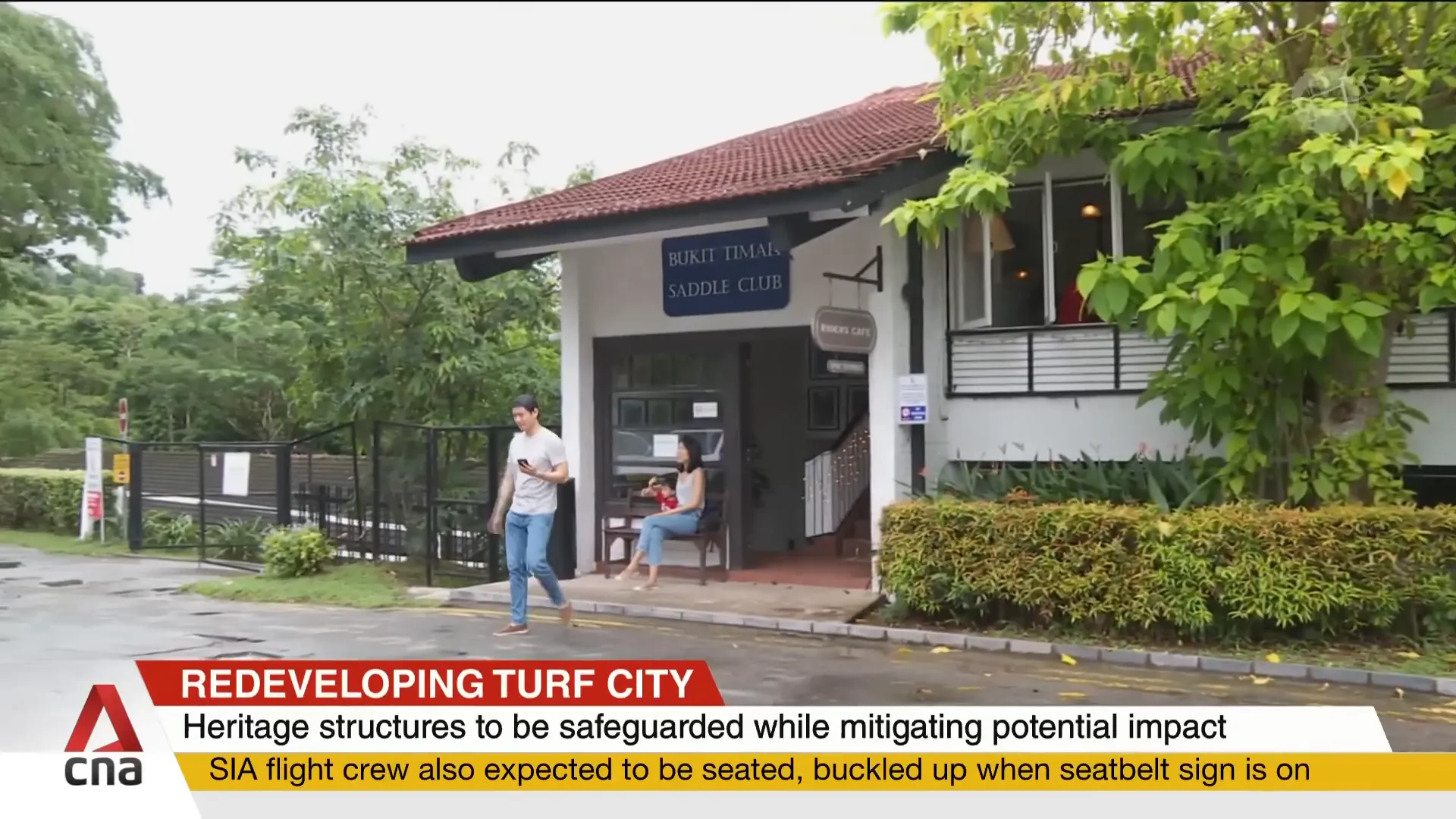
Environmental Conservation: Protecting Nature Amid Development
Environmental sustainability is a core consideration in the Bukit Timah Turf City plans. The Urban Redevelopment Authority (URA) has committed to retaining significant portions of the Einya Avenue Forest and Bukittinggi, two forested areas rich in biodiversity.
These sites are home to more than 200 plant and animal species and are critical habitats at risk during development.
URA plans to conserve these forests and explore their integration into a future park network, enhancing green connectivity and recreational opportunities for residents and visitors.
A new 400-meter-long Ecolink will connect Einya Avenue Forest and Bukittinggi, supporting wildlife movement and ecosystem health.
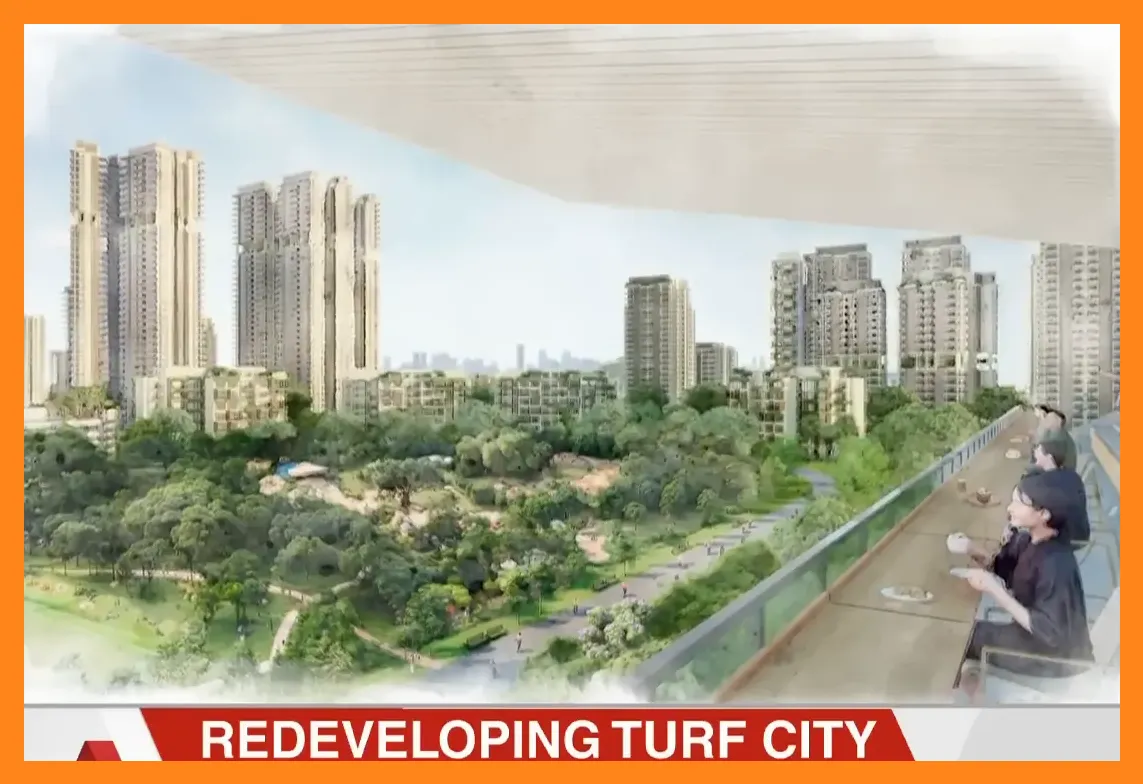
Transforming Former Turf Club Landscapes
Selected landscapes from the former Turf Club, such as the Fairways Quarters courtyard, will be transformed into green recreational spaces. These areas will offer residents respite and leisure opportunities while maintaining a connection to the site’s equestrian heritage.
Such initiatives demonstrate a commitment to sustainable urban development that balances growth with environmental stewardship.
Urban Planning and Infrastructure: Building a People-Centric, Car-Light Estate
One of the key goals for the Bukit Timah Turf City development is to create a people-centric environment that prioritizes walkability, cycling, and public transport over car dependency. This approach aligns with Singapore’s broader vision for sustainable urban living.
Walking and cycling connections will be enhanced, and the park connector network improved to encourage active mobility. The proximity to existing and upcoming MRT stations, such as the Sixth Avenue and Cross Island Line stations, will further support this car-light vision.
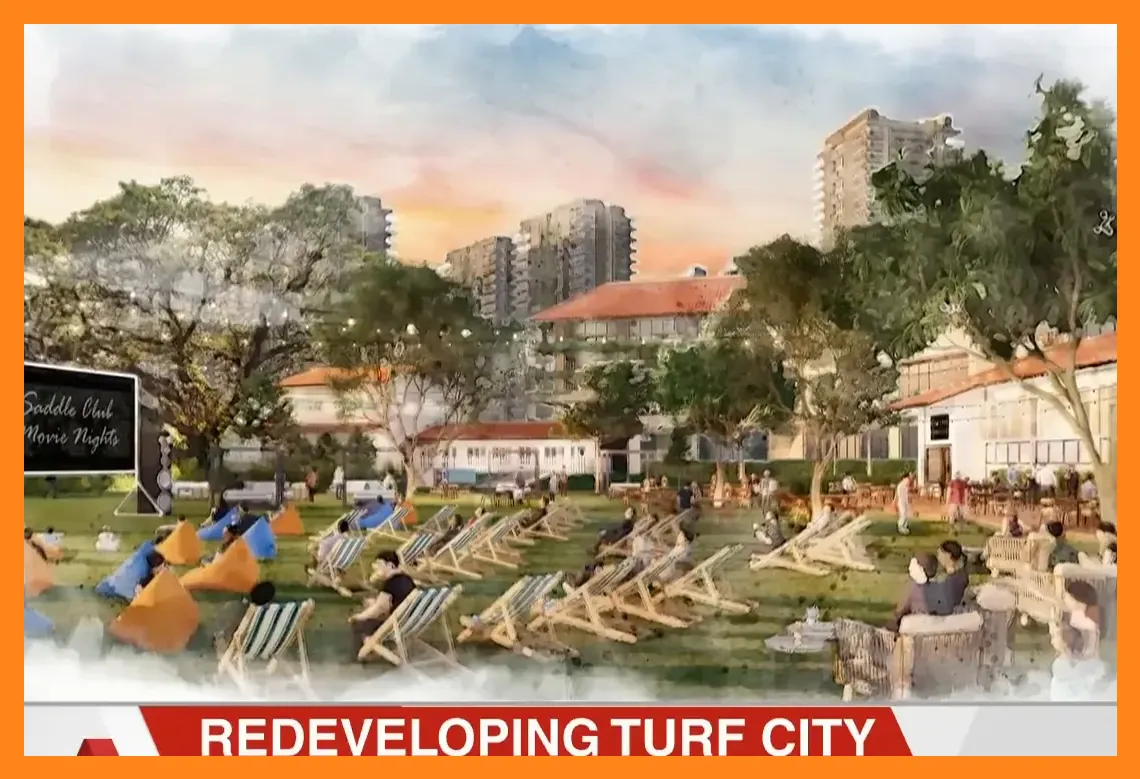
Accommodating an Aging Population
Looking ahead 20 to 30 years, Singapore’s aging population presents additional planning considerations. Elder-friendly accessibility features, such as community buggies to assist mobility within the estate, will be incorporated to ensure inclusivity and comfort.
Innovative social infrastructure, like staggered school starting times to reduce peak congestion, electric car charging points, and possibly more roundabouts to manage traffic flow, are also anticipated.
Associate Professor Tee expressed particular enthusiasm for roundabouts, which could replace traditional traffic lights within the estate to improve traffic efficiency and safety.
Balancing Heritage, Environment, and Modern Living
Developing Bukit Timah Turf City involves navigating complex trade-offs between preserving heritage, protecting natural habitats, and meeting the housing needs of a growing and diverse population.
The government’s multi-agency approach and collaboration with private sector developers are crucial to ensuring these elements are balanced sensitively and effectively.
As the development progresses, ongoing community engagement and public feedback will remain vital to refining plans and achieving a shared vision for this iconic site.
Public Engagement and Next Steps
The Urban Redevelopment Authority (URA) has opened a public consultation period inviting Singaporeans to share their views on the draft plans for Bukit Timah Turf City.
This includes feedback on the heritage and environmental impact assessments, with the consultation running through June 20th.
Public participation is encouraged to help shape a future estate that reflects community aspirations and values, ensuring that Bukit Timah Turf City remains a place where history, nature, and modern living coexist harmoniously.
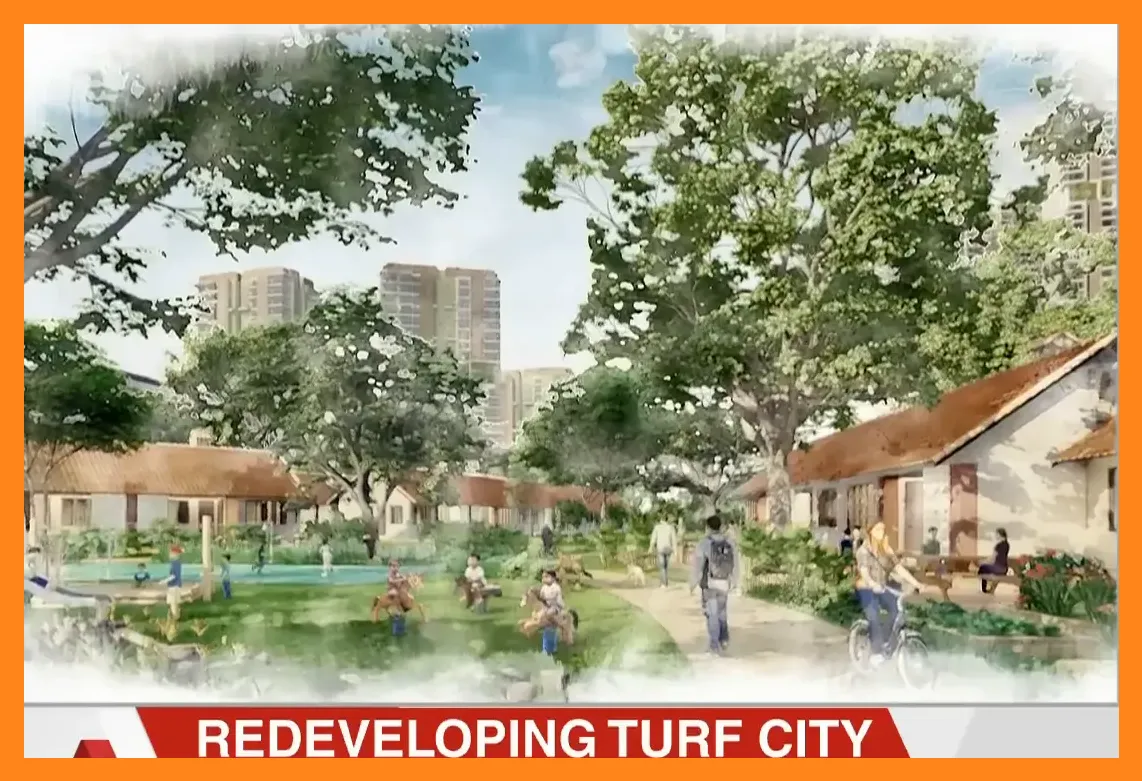
Frequently Asked Questions (FAQ)
1. How many new homes will be built at Bukit Timah Turf City?
Up to 20,000 new homes will be constructed over the next two to three decades, including both private residences and public housing flats.
2. Why is public housing being introduced in Bukit Timah after nearly 40 years?
The introduction of public housing in Bukit Timah aligns with efforts to provide equitable housing opportunities in prime locations and meet the diverse aspirations of Singaporeans who wish to live closer to city workplaces.
3. What heritage buildings will be preserved in the development?
Twenty-seven heritage buildings and structures are being considered for retention, including the North Grandstand, former stables, staff bungalows, and the Bukit Timah Saddle Club clubhouse. These sites are significant markers of the area’s equestrian and social history.
4. How will the development impact the natural environment?
The URA plans to retain key forested areas such as Einya Avenue Forest and Bukittinggi, home to over 200 plant and animal species. These will be conserved and integrated into future park networks, with new ecological links to support biodiversity.
5. What infrastructure improvements are planned to support the new estate?
Enhancements include walking and cycling paths, improved park connectors, elder-friendly accessibility features, electric vehicle charging points, and proximity to MRT stations. Traffic management innovations like roundabouts are also being considered.
6. How can the public provide feedback on the development plans?
The URA has invited Singaporeans to participate in a public consultation on the draft plans, including heritage and environmental impact assessments, open until June 20th. Details can be found on the URA website.
Conclusion
The redevelopment of Bukit Timah Turf City represents a forward-thinking approach to urban planning in Singapore, combining heritage conservation, environmental sustainability, and innovative housing solutions.
By creating four distinct neighborhoods that honor the site’s history while embracing modern living, the project exemplifies how limited land resources can be optimized to meet evolving community needs.
As Singapore continues to grow and diversify, developments like Bukit Timah Turf City will play a pivotal role in shaping inclusive, sustainable, and vibrant urban spaces that connect people, nature, and heritage.
The ongoing public engagement process ensures that this transformation is a collaborative effort, reflecting the aspirations and values of all Singaporeans.
Disclaimer: The information provided here is for general guidance only. PropsBit.com.sg does not endorse or guarantee its suitability or accuracy for your specific situation. Although we strive to ensure the content is accurate and reliable at the time of publication, it should not substitute personalised advice from a qualified professional. We strongly recommend not relying solely on this information for financial, investment, property, or legal decisions, and we disclaim any responsibility for decisions made based on this content.
This website’s information is meant solely for general informational use. PropsBit.com.sg and its authors disclaim all liability and responsibility to any individuals or organisations for any outcomes resulting from the use of this website’s content or the information presented here. PropsBit.com.sg reserves the right to add, remove, or change the website’s content at any time without prior notice.


